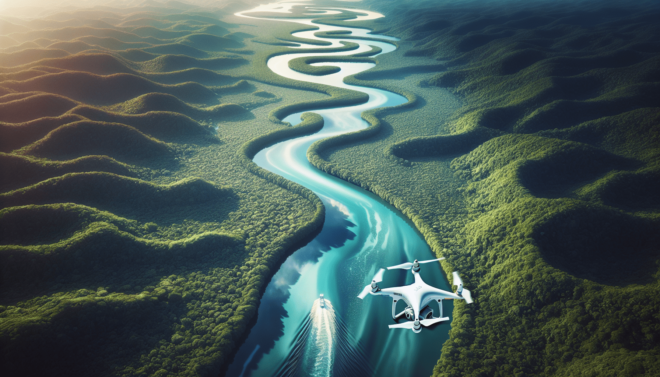Understanding Leading Lines in Photography
When it comes to drone photography, using leading lines can make a significant impact on the overall composition of your shots. But what exactly are leading lines, and how can you incorporate them into your drone photography? Let’s dive in and explore this essential concept in photography.
What are Leading Lines?
Leading lines are elements in a photograph that lead the viewer’s eye towards a specific point of interest in the image. These lines can be both natural and man-made, such as roads, fences, bridges, or even shadows. By using leading lines effectively, you can create a sense of depth and dimension in your drone photography.
Why Are Leading Lines Important in Photography?
Leading lines serve as visual cues that guide the viewer’s gaze through the image, creating a sense of movement and flow. This technique not only draws attention to the main subject but also helps to create a more dynamic and engaging composition. In drone photography, where the aerial perspective can sometimes make images appear flat, leading lines can add depth and visual interest to your shots.
Incorporating Leading Lines in Drone Photography
Now that we understand the significance of leading lines in photography, let’s explore how you can effectively incorporate them into your drone shots.
Choosing the Right Location
When scouting for locations for your drone photography, look for places with prominent leading lines that can enhance your composition. This could be a winding river, a row of trees, a pathway, or even the lines of a building. Consider how these lines can lead the viewer’s eye towards your main subject or create a sense of direction in your shot.
Experimenting with Different Perspectives
In drone photography, you have the advantage of capturing images from unique angles and perspectives. Take advantage of this by experimenting with different heights and angles to find the best vantage point for your leading lines. Flying higher or lower, tilting the camera, or using the drone’s movement can all help you achieve more dynamic compositions.
Using Symmetry and Patterns
Symmetry and patterns can also be powerful elements to include in your drone photography compositions. Look for symmetrical shapes or repeating patterns that can act as leading lines and add visual interest to your images. By framing your shot with symmetrical elements, you can create a sense of balance and harmony that enhances the overall impact of your photo.
Incorporating Shadows and Light
Light and shadow play a crucial role in creating leading lines in photography. Pay attention to how light interacts with the landscape below and use shadows to your advantage. Shadows can create natural leading lines that draw the viewer’s eye towards your subject, adding depth and contrast to your drone shots.
Composing Your Shots
When composing your drone shots using leading lines, keep in mind the fundamental principles of photography, such as the rule of thirds and the golden ratio. Placing your main subject at the intersection of these lines can help create a more visually appealing composition. Experiment with different framing options and perspectives to see what works best for your specific scene.
Post-Processing Techniques
In addition to capturing leading lines in-camera, you can enhance them further through post-processing techniques. Adjusting contrast, saturation, and sharpness can help emphasize the lines in your image and make them stand out more. You can also experiment with cropping and framing to highlight the leading lines and create a more impactful composition.
Analyzing and Learning from Your Shots
As you practice incorporating leading lines into your drone photography, take the time to analyze your shots and learn from them. Pay attention to how different elements in your composition interact with each other and how leading lines contribute to the overall impact of the image. By studying your work and seeking feedback from others, you can refine your skills and develop a better eye for composition.
Conclusion
Incorporating leading lines into your drone photography can take your images to the next level, creating visually engaging compositions that draw viewers in and keep them captivated. By understanding the principles of leading lines and experimenting with different techniques, you can elevate your drone shots and create stunning visuals that stand out from the crowd. So next time you take your drone out for a flight, keep an eye out for those leading lines and see how they can transform your photography.

